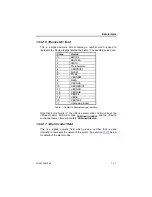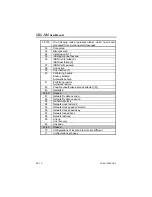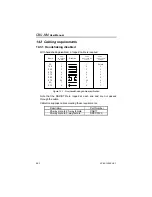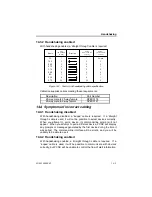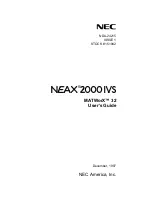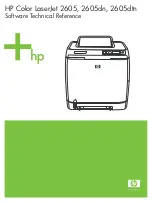
Data formats
80-60100000-02
13–5
last record in the file is terminated with a <CR>,<LF>, like all the other
records, and is not followed by an End Of File marker.
Each record consists of a number of fields separated by commas. There
are three types of field in the records. These are
text fields, signed
numeric fields, and unsigned numeric fields.
13.3.1.1 Text fields
Text fields are variable in length. The text data is enclosed in double-
quotation marks, ASCII code 22 hex. Double-quotation mark characters
contained in the text are translated into two consecutive double-
quotation mark characters.
String field contents are truncated to a maximum of 255 characters.
13.3.1.2 Signed Numeric Fields
Signed numeric fields consist of an optional minus sign, followed by one
or more digits. These fields are not enclosed in quotation marks. The
ranges of legal values are field-dependent and are described below.
13.3.1.3 Unsigned Numeric Fields
Unsigned numeric fields consist of one or more digits. These fields are
not enclosed in quotation marks. The ranges of legal values are
described below and depend on the field.
13.3.2 Record format
When you open a .CSV file in spreadsheet such as Microsoft
Excel,
you will see the alarms tabulated in a similar way to the Alarm Log
windows.
Codes are used to describe the alarm types.
Each record contains the data for a single alarm. This consists of the
following fields:
<Date>,<Time>,<Unacknowledged flag>,<Poll number>,<Channel number>,
<Device ID>,<Alarm code>,<Product name>,<Device or channel name>,
<Alert message>

















